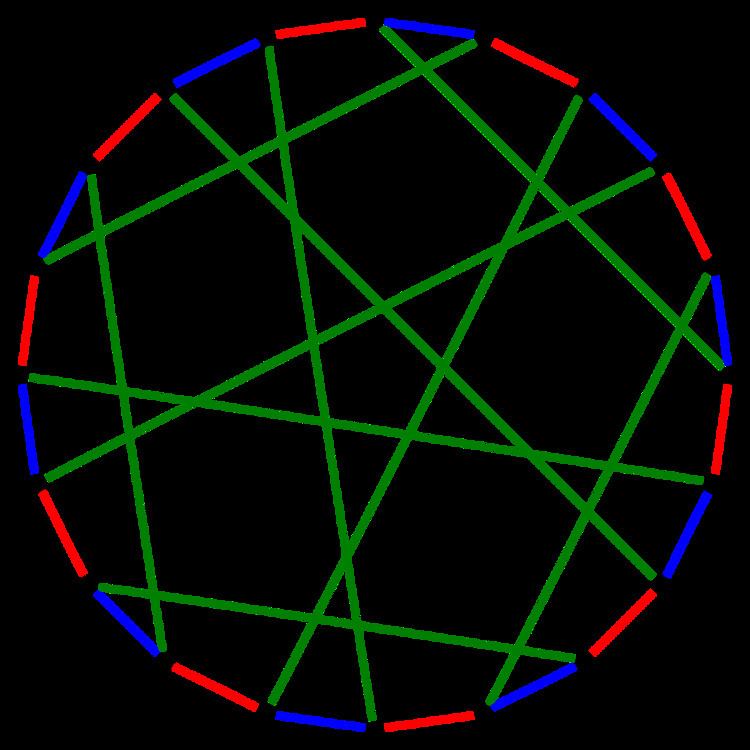 | ||
In graph theory, a factor of a graph G is a spanning subgraph, i.e., a subgraph that has the same vertex set as G. A k-factor of a graph is a spanning k-regular subgraph, and a k-factorization partitions the edges of the graph into disjoint k-factors. A graph G is said to be k-factorable if it admits a k-factorization. In particular, a 1-factor is a perfect matching, and a 1-factorization of a k-regular graph is an edge coloring with k colors. A 2-factor is a collection of cycles that spans all vertices of the graph.
Contents
1-factorization
If a graph is 1-factorable (ie, has a 1-factorization), then it has to be a regular graph. However, not all regular graphs are 1-factorable. A k-regular graph is 1-factorable if it has chromatic index k; examples of such graphs include:
However, there are also k-regular graphs that have chromatic index k + 1, and these graphs are not 1-factorable; examples of such graphs include:
Complete graphs
A 1-factorization of a complete graph corresponds to pairings in a round-robin tournament. The 1-factorization of complete graphs is a special case of Baranyai's theorem concerning the 1-factorization of complete hypergraphs.
One method for constructing a 1-factorization of a complete graph involves placing all but one of the vertices on a circle, forming a regular polygon, with the remaining vertex at the center of the circle. With this arrangement of vertices, one way of constructing a 1-factor of the graph is to choose an edge e from the center to a single polygon vertex together with all possible edges that lie on lines perpendicular to e. The 1-factors that can be constructed in this way form a 1-factorization of the graph.
The number of distinct 1-factorizations of K2, K4, K6, K8, ... is 1, 1, 6, 6240, 1225566720, 252282619805368320, 98758655816833727741338583040, ... A000438.
1-factorization conjecture
Let G be a k-regular graph with 2n nodes. If k is sufficiently large, it is known that G has to be 1-factorable:
The 1-factorization conjecture is a long-standing conjecture that states that k ≈ n is sufficient. In precise terms, the conjecture is:
The overfull conjecture implies the 1-factorization conjecture.
Perfect 1-factorization
A perfect pair from a 1-factorization is a pair of 1-factors whose union induces a Hamiltonian cycle.
A perfect 1-factorization (P1F) of a graph is a 1-factorization having the property that every pair of 1-factors is a perfect pair. A perfect 1-factorization should not be confused with a perfect matching (also called a 1-factor).
In 1964, Anton Kotzig conjectured that every complete graph K2n where n ≥ 2 has a perfect 1-factorization. So far, it is known that the following graphs have a perfect 1-factorization:
If the complete graph Kn + 1 has a perfect 1-factorization, then the complete bipartite graph Kn,n also has a perfect 1-factorization.
2-factorization
If a graph is 2-factorable, then it has to be 2k-regular for some integer k. Julius Petersen showed in 1891 that this necessary condition is also sufficient: any 2k-regular graph is 2-factorable.
If a connected graph is 2k-regular and has an even number of edges it may also be k-factored, by choosing each of the two factors to be an alternating subset of the edges of an Euler tour. This applies only to connected graphs; disconnected counterexamples include disjoint unions of odd cycles, or of copies of K2k+1.
